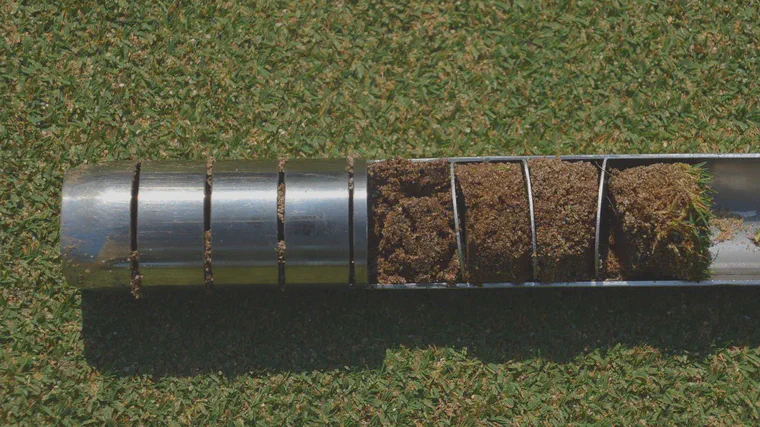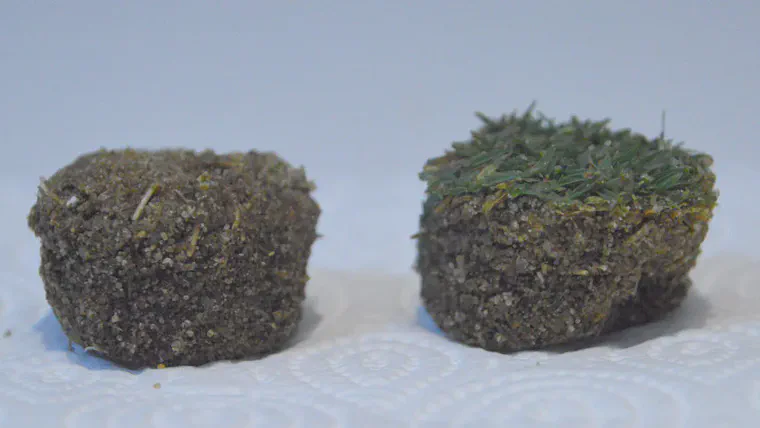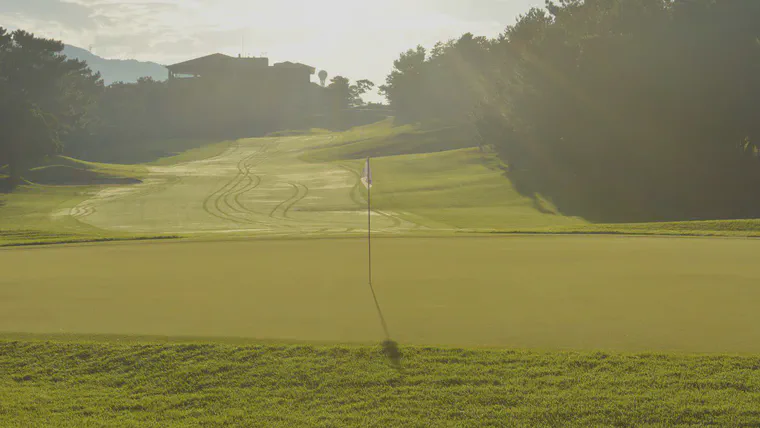This one simple trick can transform putting greens from usually good to consistently great
What’s the trick? It is measuring the soil organic matter in the green, over time, and then adjusting the maintenance work. The purpose of this is to simultaneously produce a putting surface with the desired characteristics while minimizing the amount of disruptive work done to the putting surface. Here’s how it works.
First, soil samples need to be tested in a specific way. I recommend collecting samples and cutting them to depths of 2, 4, and 6 cm below the soil surface. The samples at each depth will be tested separately. Why cm instead of inches? I prefer cm because these depths are already in common use for testing in New Zealand and in the UK, and the test results can be directly compared if they are from the same depths. Also, this is 20% more sensitive to subtle changes in soil organic matter than if the samples are cut in increments of 1 inch—a 2 cm increment is 0.8 inches.

One can’t just send the sample to any lab and ask for a standard organic matter test. There are many reasons the standard test may not be measuring all the organic matter, chief among them being the removal of undecayed plant material. When testing soil organic matter by depth in turfgrass, I recommend:
- testing the entire sample without screening out any of the undecayed material
- doing the loss on ignition at 440 °C for complete ashing of all the organic matter
- leaving verdure (the stems and leaves) on samples from putting green turf and removing verdure from samples mown at 6 mm (0.25 inches) and above
Brookside Laboratories now offers this as a standard test, and include a loss on ignition at 360 °C in this test too.

The interpretation of the results is easy. One looks at three things.
1. What is the total organic matter?
It’s not so much the exact amount of total organic matter in the soil that I want to know. I’ve seen great greens at 4% total organic matter in the top 2 cm, and I’ve also seen great greens with 15% total organic matter. The number that I want to look at is the slope of the line connecting organic matter measurements the last time they were tested, and the organic matter now. Is the organic matter in the soil increasing over time? Is it decreasing? Or is it staying constant?
2. What is the putting surface performance?
I look at two specific things here. First, what is the firmness level of the surfaces? Second, how much water is being held near the surface? And I evaluate those. Do I want them to change up or down, or am I happy with them?
3. What work has been done to manage organic matter?
How much sand has been applied? What type of core removal, sand injection, or scarifying has been done? I want to quantify this information.
From these three things, the work can be adjusted to produce better surfaces in the future.
If the surfaces have just the right firmness level and hold the right amount of water, then I want the total organic matter to stay the same over time, and I can adjust the sand topdressing and other organic matter management work accordingly.
If the surfaces are too soft, or hold too much water near the surface, and I would like them to be firmer in the future, then I want to see the total organic matter decrease over time, and I will increase the amount of sand topdressing and organic matter management.
If the surfaces are too firm, or don’t hold enough water near the surface, and I would like them to be softer in the future, then I want to see the total organic matter increase over time. To do that, I will reduce the amount of sand topdressing and organic matter management.

This simple trick makes a lot of sense to me. I hope you find it useful too.
For more about these measurements, see: